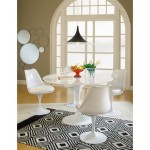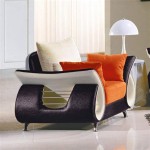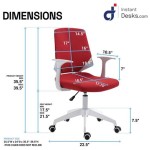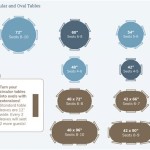The Round Table with 10 Chairs: A Symbol of Equality and Collaboration
The image of a round table with ten chairs evokes a sense of unity, equality, and collaborative discussion. This iconic symbol has been prevalent throughout history and continues to hold significance across various cultures and contexts. The circular shape of the table, with its lack of a designated head, promotes a sense of egalitarianism, where all participants are considered equal and have an equal opportunity to voice their opinions. The ten chairs represent a specific number of individuals coming together, symbolizing a limited but significant group working collectively towards a common goal.
The Historical Significance of Round Tables
The round table has a rich history, dating back to ancient times. In ancient Rome, round tables were used in banquets and feasts, symbolizing the unity and fellowship of the guests. The concept of a round table as a symbol of equality and collaboration gained prominence during the medieval period, particularly with the legend of King Arthur and the Knights of the Round Table. In Arthurian legend, the round table served as a gathering place for King Arthur and his knights, where they discussed matters of great importance and made decisions together. The absence of a head at the table emphasized the equality among the knights and the importance of a shared decision-making process.
This symbolism extended beyond the realm of legend. In the 13th century, King Edward I of England introduced the concept of the "round table" as a legal institution. These round tables were assemblies of knights and other dignitaries who met to discuss judicial matters and resolve disputes. The round shape of the table signified the equal status of all participants and their shared responsibility in administering justice.
The Round Table in Modern Contexts
The round table remains a powerful symbol in modern times. It is frequently used in business meetings, conferences, and other group discussions. The circular shape encourages open communication and allows for all participants to feel heard and valued. The ten chairs can represent different perspectives, expertise, or roles within a team. In a business meeting, the round table can foster collaboration and problem-solving, as all members have equal access to information and the opportunity to contribute to the discussion. In a classroom setting, a round table can promote student engagement and discussion, encouraging active learning and peer collaboration.
Beyond the Physical Table: The Round Table as a Concept
The round table also represents a metaphorical concept of equality, collaboration, and inclusivity. It embodies the idea of a shared space where individuals from different backgrounds, perspectives, and experiences can come together to exchange ideas, build consensus, and work towards common goals. This concept is relevant in various contexts, including political discourse, social activism, and international negotiations. In these scenarios, the round table symbolizes a commitment to dialogue, understanding, and finding solutions that benefit all involved.
The round table with ten chairs continues to resonate with contemporary audiences. It serves as a reminder of the importance of equality, collaboration, and inclusive dialogue in achieving common goals. Whether it is a physical table used for meetings or a symbolic representation of open communication, the round table remains a powerful symbol of unity and shared purpose.

White Round Party Table With 10 Chairs At Jump 4 Adan

White Round Party Table With 10 Chairs At Jump 4 Adan

60 Round Table Package 1

Rent 66 Inch Round Tables Just 4 Fun Party Rentals Santa Barbara

72 Round Seats 10 12ppl

Resources Spark Event Rentals

Round Dining Table 10 Chairs Modern Buffet 305

Banquet Table Setup Diagrams Layout Tips Mitylite

Plan Of A Round Table And 10 Chairs

60 Round Table Seat 8 To 10 Destination Events








